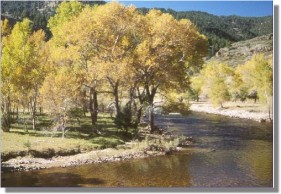Regional Information |
Ecosystems
 Ecosystem
Protection is not a single program administered by EPA. It is a collection of
regulatory and non-regulatory programs within the EPA Region 8 office. By aggregating
several programs into a collective unit, it enables the EPA Region 8 office to
pool resources, involve more stakeholders, and set goals which enable more effective
protection and restoration of watersheds, aquifers, and ecosystems.
Ecosystem
Protection is not a single program administered by EPA. It is a collection of
regulatory and non-regulatory programs within the EPA Region 8 office. By aggregating
several programs into a collective unit, it enables the EPA Region 8 office to
pool resources, involve more stakeholders, and set goals which enable more effective
protection and restoration of watersheds, aquifers, and ecosystems.
At the heart of the Ecosystem Protection Program is the ecosystem approach. In addition to implementing regulatory programs (e.g., stormwater permitting, water quality monitoring), the Ecosystem Protection Program as a whole establishes priorities and applies an approach (the "Ecosystem Approach") which is designed to achieve environmental results which may not be attainable through implementation of EPA's traditional regulatory programs alone.
The typical steps in the ecosystem approach are:
- Define an area of interest/concern
- Involve stakeholders (locals often lead the process)
- Develop a shared vision of the desired state
- Characterize the historic ecosystem and the present economic, environmental and social conditions and trends
- Establish environmental goals
- Develop and implement an action plan.
- Monitor conditions/evaluate results
- Change management if needed, based on new information.
Visit the Ecosystem Protection Projects page for examples of how this works in real communities and watersheds within Region 8.
![[logo] US EPA](https://webarchive.library.unt.edu/eot2008/20090508115550im_/http://www.epa.gov/epafiles/images/logo_epaseal.gif)
 Ecosystem Protection
Ecosystem Protection